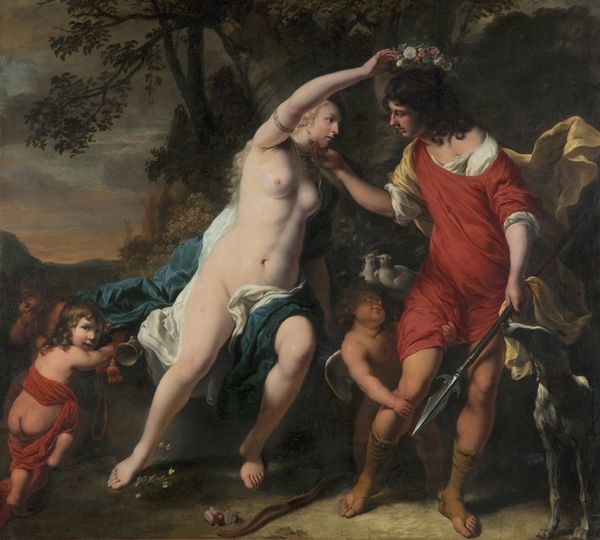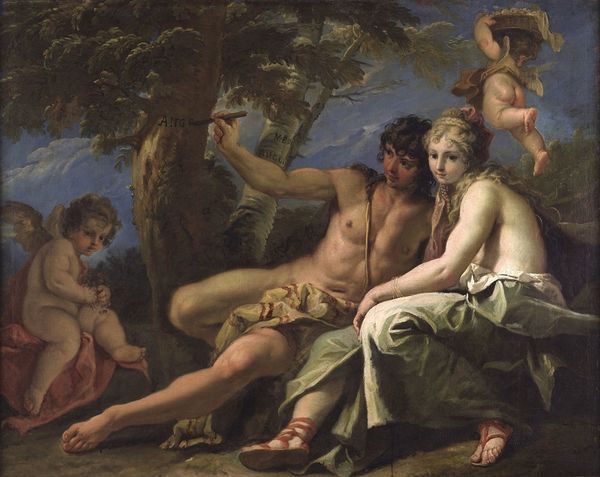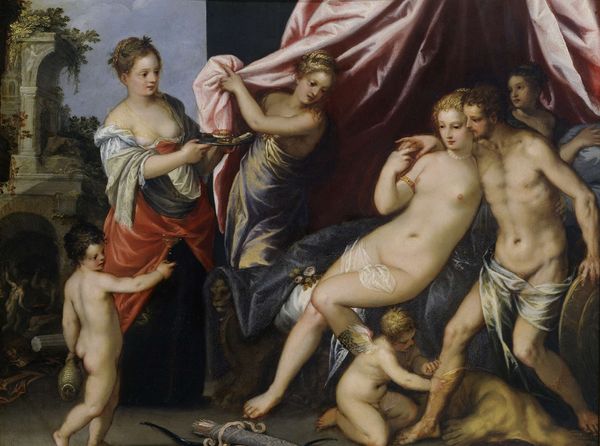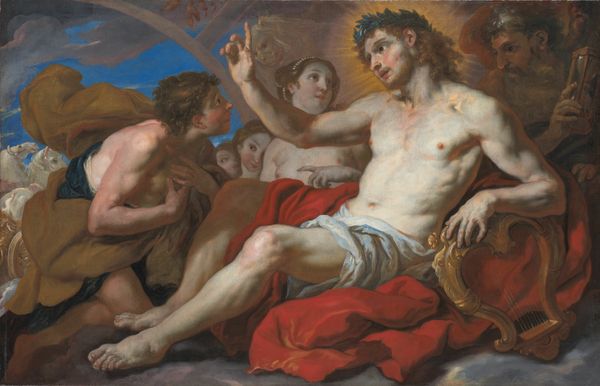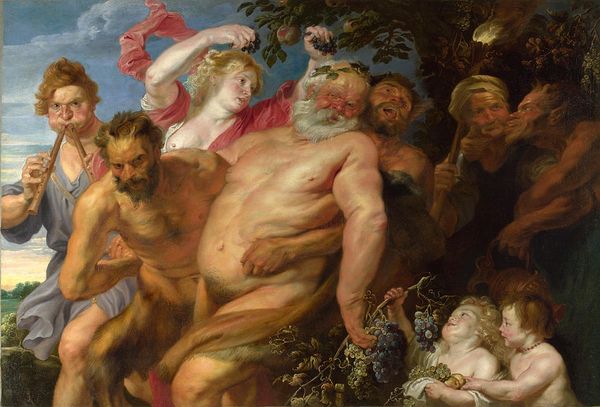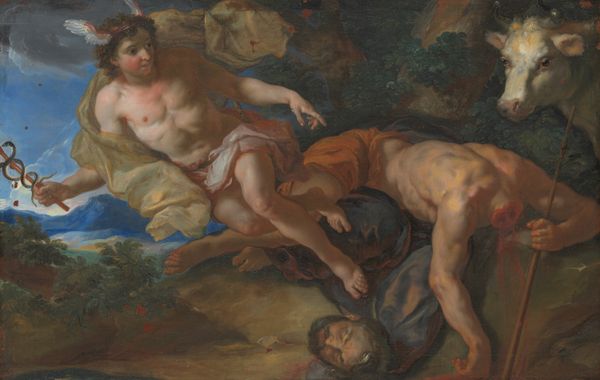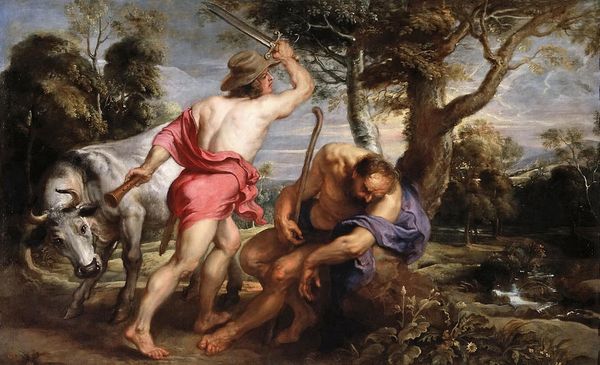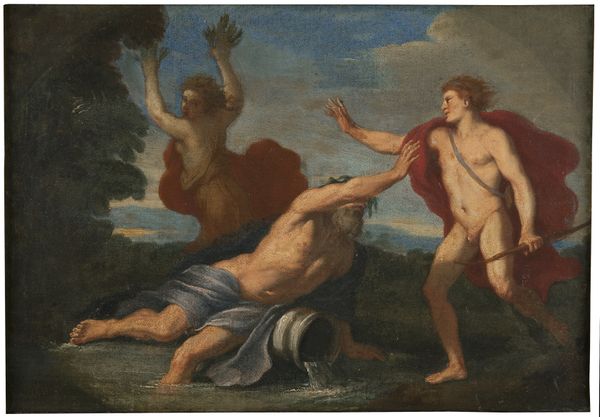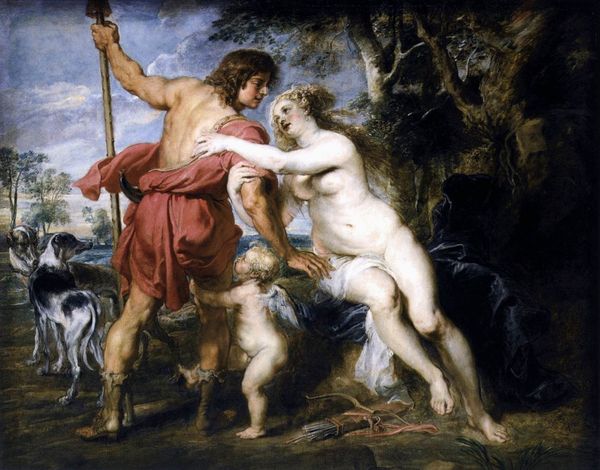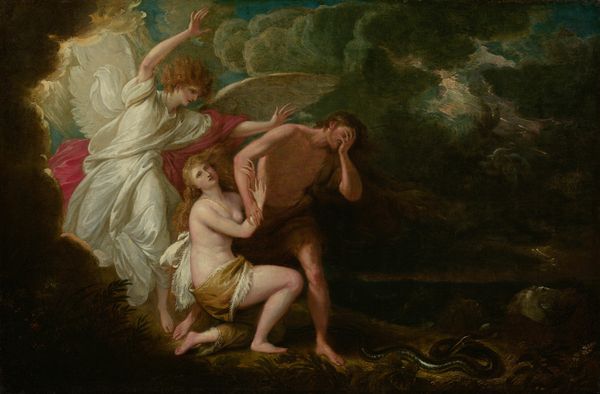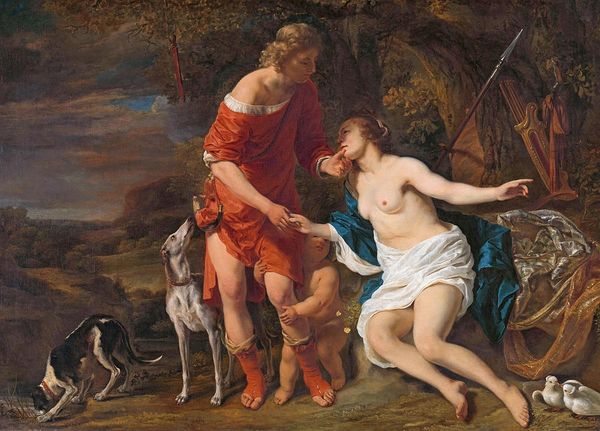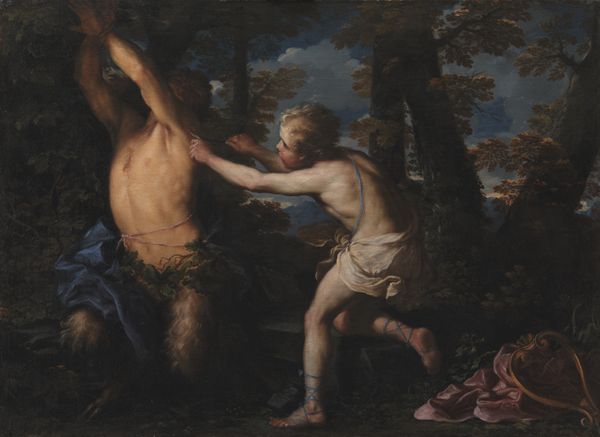
Juno receiving the eyes of Argus from Mercury 1615
0:00
0:00
painting, oil-paint
#
painting
#
oil-paint
#
mannerism
#
figuration
#
oil painting
#
mythology
#
human
#
painting painterly
#
history-painting
#
nude
#
portrait art
Dimensions: 131 x 181 cm
Copyright: Public domain
Curator: Hendrick Goltzius’s Mannerist oil on canvas, created around 1615, and titled “Juno receiving the eyes of Argus from Mercury” currently resides here in the Museum Boijmans Van Beuningen. Editor: Immediately, I'm struck by the drama of the composition. The diagonal arrangement of the figures, from the fallen Argus to Juno, creates a dynamic, almost theatrical tension. The painterly brushstrokes emphasize the physicality of the figures. Curator: Precisely. The undulating lines, the exaggerated musculature – hallmarks of Mannerism – guide our eyes. Notice how Goltzius uses color to define form and create emotional resonance. The cool blues of Juno's cloak contrast with the warm reds of the drapery. What do you think it suggests? Editor: Well, the coolness around Juno and warmth around Mercury suggests a shift in power or emotion, doesn’t it? Juno, goddess of marriage, is receiving the eyes – potent symbols of vigilance – from Mercury after he slays Argus, her watchman, who was guarding Io. Argus is now forever part of her identity. Curator: Yes, the eyes are a significant detail, aren’t they? They signify Juno's all-seeing nature, her power to observe and control. In compositional terms, though, consider the swirling clouds in the background, creating a sense of divine turmoil, while also emphasizing the idealized bodies of the protagonists. Editor: Absolutely, those clouds definitely echo the emotional upheaval. It’s as if nature itself is reacting to the deception and violence. Plus, isn’t it striking how Juno’s gesture towards Mercury is almost an acknowledgement, rather than rage. A complicity in this act? Curator: That’s a perceptive reading. The body language is purposefully ambiguous. While the composition emphasizes classical forms, it is tempered by an almost modern awareness of psychological nuance and the human element. It's a complex tableau. Editor: Ultimately, it's about power and its visual representation: from the sword on the ground to those ever watchful eyes on the peacock behind Juno. Curator: Indeed. Goltzius provides an example for subsequent interpretations of the narrative that still fascinate today. Editor: Right, this glimpse of classical mythology keeps these figures and stories resonating throughout our history.
Comments
No comments
Be the first to comment and join the conversation on the ultimate creative platform.
